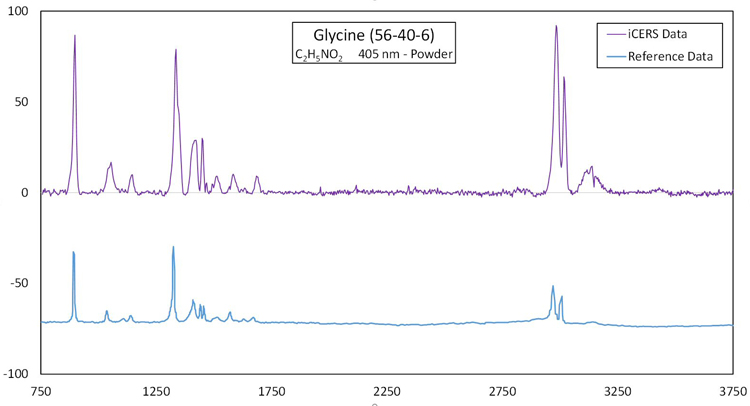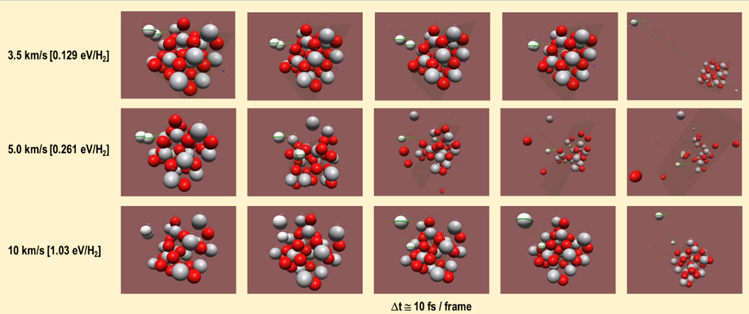Background
The objective of this project is to study the molecular fragmentation velocity threshold by performing high-velocity impact tests for different projectile scales.
Approach
The projectiles to be used consist of solid clusters and molecules relevant to the planetary research community. The scales of the projectiles range from molecular (plasma) to nanoscale clusters and micrograms or decigrams of small particles. Computer simulations are being performed to account for the correct physics and chemistry of molecular impacts. The idea is to accurately predict the kinetic threshold of fragmentation and fragmented species after impact.
Accomplishments
The research is still ongoing with key accomplishments to date being:
- Built two integrating cavities that will be used to record Raman spectra during impact events. See the Raman spectra of Glycine, one of the organic compounds of interest to NASA, in Figure 1.

Figure 1: Raman spectra of glycine powder at 405 nm excitation wavelength. The iCERS data is shown in the upper trace while the Raman reference spectra for glycine powder is shown in the lower trace.
- Purchased spectrograph and streak camera to record dynamic spectra during impact events.
- Launched fused-quartz projectiles at velocities of approximately 2-3 km/s with small two-stage light-gas gun.
- Launched aluminum flyer plates at velocities of 2.5 km/s.
- Built an experimental apparatus to simulate molecular fragmentation mechanisms and energy thresholds using a plasma source coupled with an ion and neutral mass spectrometer. A range of experiments are currently underway to test hypotheses about the mechanisms and products of molecular fragmentation in the hyperthermal regime.
- Computer simulations are underway that will be validated with the tests results, see Figure 2.

Figure 2: Time-based snapshots of QMD simulation results for the H2 - TiO2 (rutile) slab impact model, carried out at three different H2 impact velocities. White spheres = H; red = O; grey = Ti.
